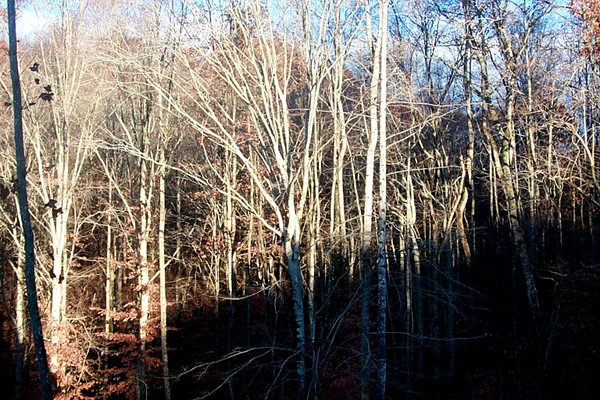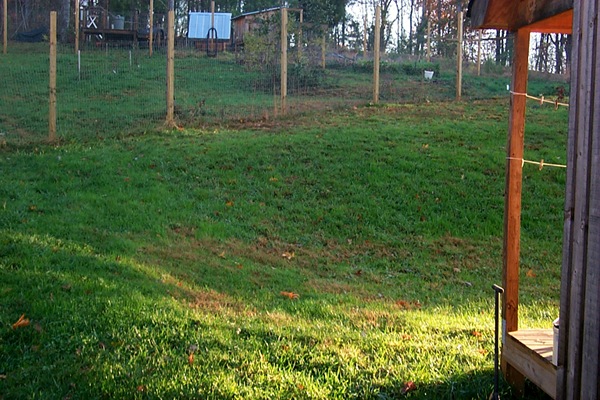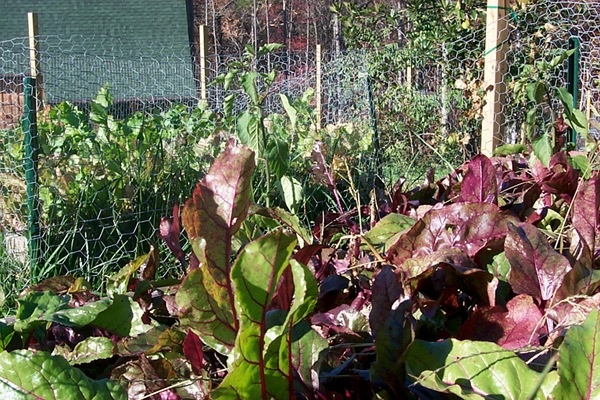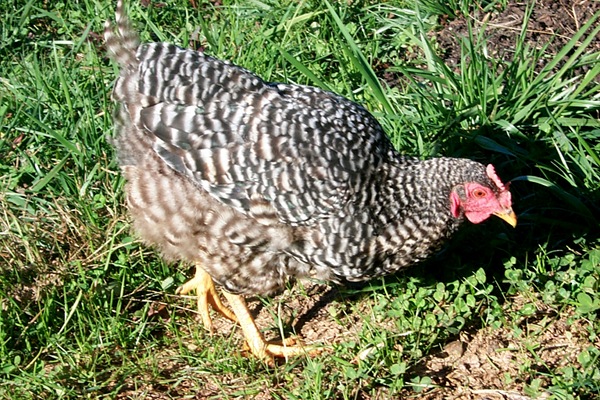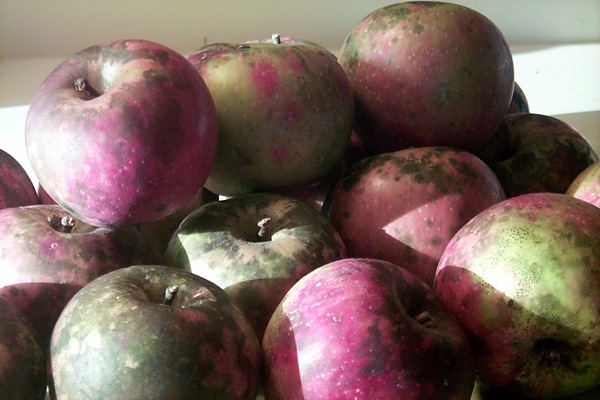
Black Twig apples straight from the orchard
I was watching an episode of the Two Fat Ladies cooking show last week (I’ve been working my way through the entire series on DVD), and they were making a dish with apples. One of the ladies said, “But don’t use Golden Delicious. They have no flavor.” Then they had a little discussion about how Americans don’t know much about apples.
I couldn’t agree more. I make the same complaint all the time, especially when I pass the apples in the grocery store. I’ve probably said it a thousand times. Apples must be ugly. “Pretty” apples are bred for grocery stores.
Some people also would be afraid to buy an apple with a name they haven’t heard of. They want the mass-market varieties — Golden Delicious, Winesap, Granny Smith, etc. They’ve forgotten the names of the old home-orchard varieties.
I bought my apple trees from Century Farm Orchards in Caswell County, North Carolina. I had to make a trip there today to pick up two apple trees I had ordered — two two-year-old Arkansas Black trees to replace two young trees that died during the summer. Century Farm specializes in old Southern varieties of apple trees. I have 10 apple trees in my little orchard, and they’re a mix of old Southern varieties: Arkansas Black, Limbertwig, Kinnaird’s Choice, Mary Reid, Smokehouse, Summer Banana, William’s Favorite and Yellow June. I also have a Pumblee pear tree from Century Farms. The trees were planted in 2008. I’m not expecting the trees to be mature enough to bear apples for probably two more years.

